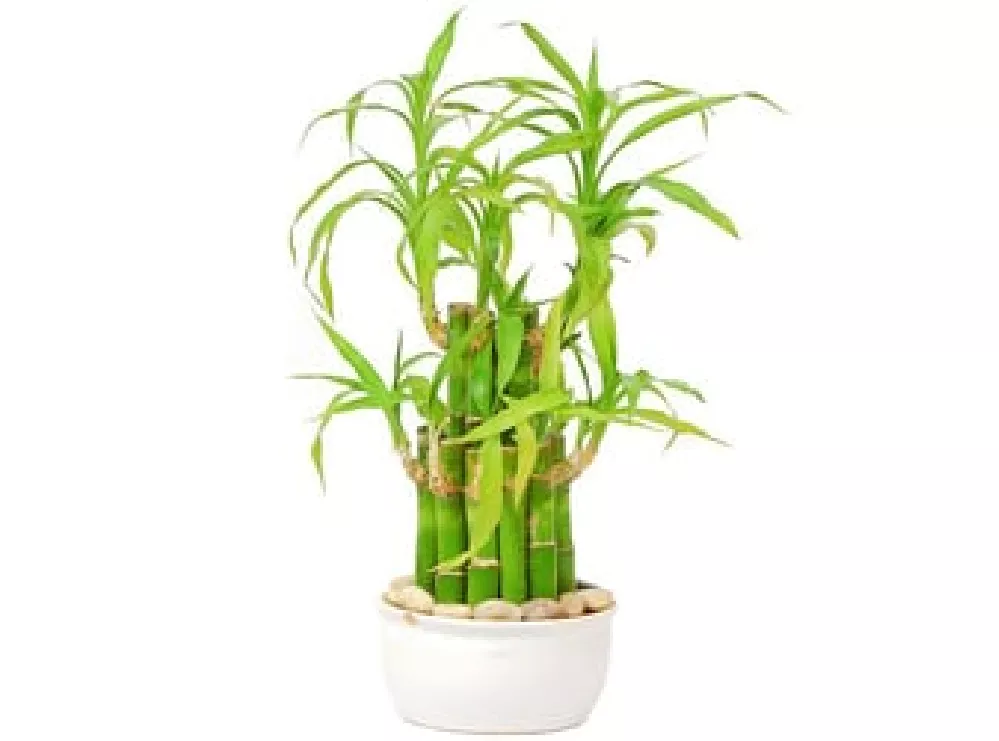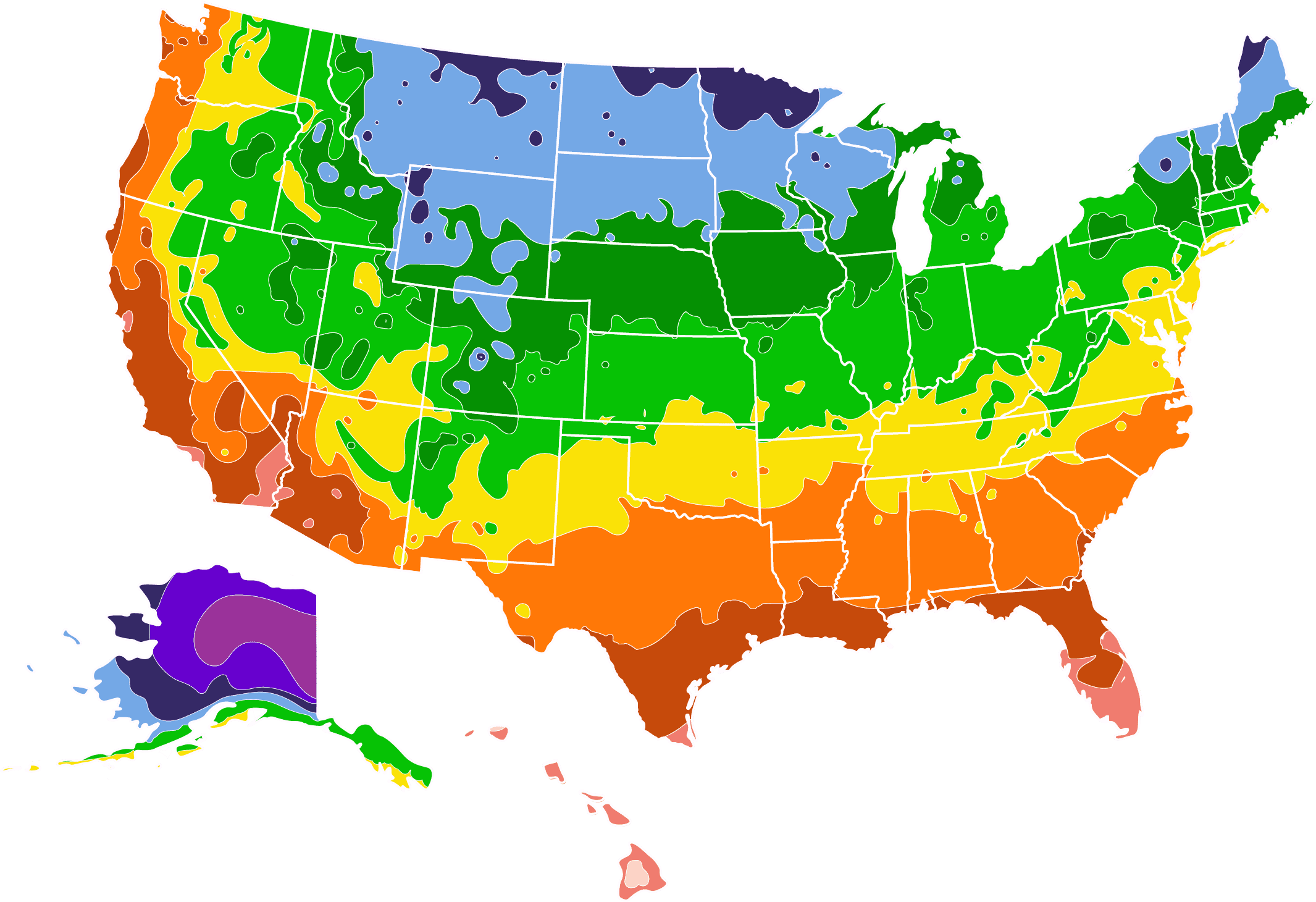- Home >
- Houseplants >
- Lucky Bamboo Trees
Lucky Bamboo Trees for Sale
The odds are you have already seen many lucky bamboo trees in your lifetime. Because this plant is easy to raise, it is one of the most popular indoor plants around. Lucky bamboo tree, also known as Dracaena sanderiana, is a small bamboo species with thick stalks and an ability to thrive in different growing mediums, including soil and water. Many people keep this species as a low-maintenance desk plant for this reason.
- Tends to be very easy to care for.
- Grows in soil or water.
- Can form interesting shapes and growth patterns.
Planting and Care
Planting instructions
To grow a lucky bamboo tree in water, begin by adding a layer of small stones to the bottom of your container. This will give the roots a place to attach themselves. Then fill the container with distilled water until the roots are submerged.
If you plant your lucky bamboo tree in soil, use soil with good drainage. Provide plenty of water so the soil remains moist. Slightly acidic soil is best. Whether you use soil or water, your lucky bamboo tree should grow in indirect light or light shade.
Watering and nutrients
If you grow your lucky bamboo tree in water, all you will need to do is replace the water every week or so. When you grow this species in soil, its watering needs are surprisingly low. A weekly application of water is suitable to ensure the soil is neither too wet or dry.
Lucky bamboo trees also survive with minimal fertilization. A single yearly application of organic material will do the trick. For the best results, try using either organic compost or some form of manure.
Pruning
Pruning for lucky bamboo trees can take place any time of the year. You should prune any parts of the plant that appear to be dead, broken, or excessively thin. You can use your pruning to prevent this plant from becoming too top-heavy.
It is good practice to prune lucky bamboo trees as much as you need. The plant can grow quickly, meaning it will respond well to the pruning cuts you make. After a few well-located cuts, your lucky bamboo tree will exhibit more vigorous growth.
Pests, diseases, and animals
Unfortunately, lucky bamboo trees can fall victim to several varieties of pests and diseases. When this plant receives too much water, it can begin to droop and form abnormal growths. Lucky bamboo trees can also have problems with powdery mildew and leaf spot.
Lucky bamboo trees can struggle with pest infestations. The most common pests that appear are mites and mealybugs. If you notice any pest or diseases on your lucky bamboo trees, you should remove the affected portion of the plant.
Achieving maximum results
One of the most intriguing aspects of this plant is it can grow to form interesting shapes with its stalks. Many gardeners train this species to form spirals or circles, which can dramatically enhance the visual appeal of the plant.
One of the best ways to do this sort of training is to manipulate the light that reaches your lucky bamboo tree. By limiting sun exposure to a single side, the plant will have no option but to grow in that direction. Experimenting with varying sun exposure angles will allow you to master this unique effect.
FAQs
Are lucky bamboo trees good luck?
As the name implies, lucky bamboo trees carry a connotation of good fortune for some. In some cultures, gifting a lucky bamboo tree is said to bring prosperity to the recipient. Such traditions are most common in Asian cultures. In some instances, variations in the number of layers this plant shows imply different cultural meanings. Along with that association, lucky bamboo trees are a symbol of strength in some parts of the world.
How long does a lucky bamboo tree live?
Lucky bamboo trees are usually very short-lived plants. When they grow in water, they will survive for about one or two years. This is true even if you supply your plant with proper care. If you wish to increase the lifespan of your lucky bamboo tree, you should plant it in soil. In soil, this species can last for a few years longer than it would in water.
Are lucky bamboo trees a form of bamboo?
Despite the common name, lucky bamboo trees are not, technically, a form of bamboo. This plant holds a stronger genetic relationship to succulent plants. The reason for the common name is due to the appearance of this plant. Because the stalks of this species look incredibly similar to those of true bamboo plants, lucky bamboo tree became the most widely used name for the plant. The Lucky Bamboo tree can be cultivated as a houseplant either indoors or outdoors. You could use decorative bowls or planters, for example, containing only rocks and adequate water. This makes it remarkably easy for gardeners or anyone to nurture indoors. You might as well go the traditional route and opt to pot it in adequately aerated soil to induce a more vibrant growth. The jury is out on which of these two is the best way to cultivate the plant as gardeners have found that both approaches could be successful in the long-term if done right. So it really comes down to personal preference. When you get your Lucky Bamboo from Taiwan or China, for example, and you take it out of the container it came in, it is very likely that it will be bound with string or wire gauze. The best course of action is to take off the string to prevent the possibility of diseases starting and spreading through the plant from a cut in the stalks as the plant grows.









